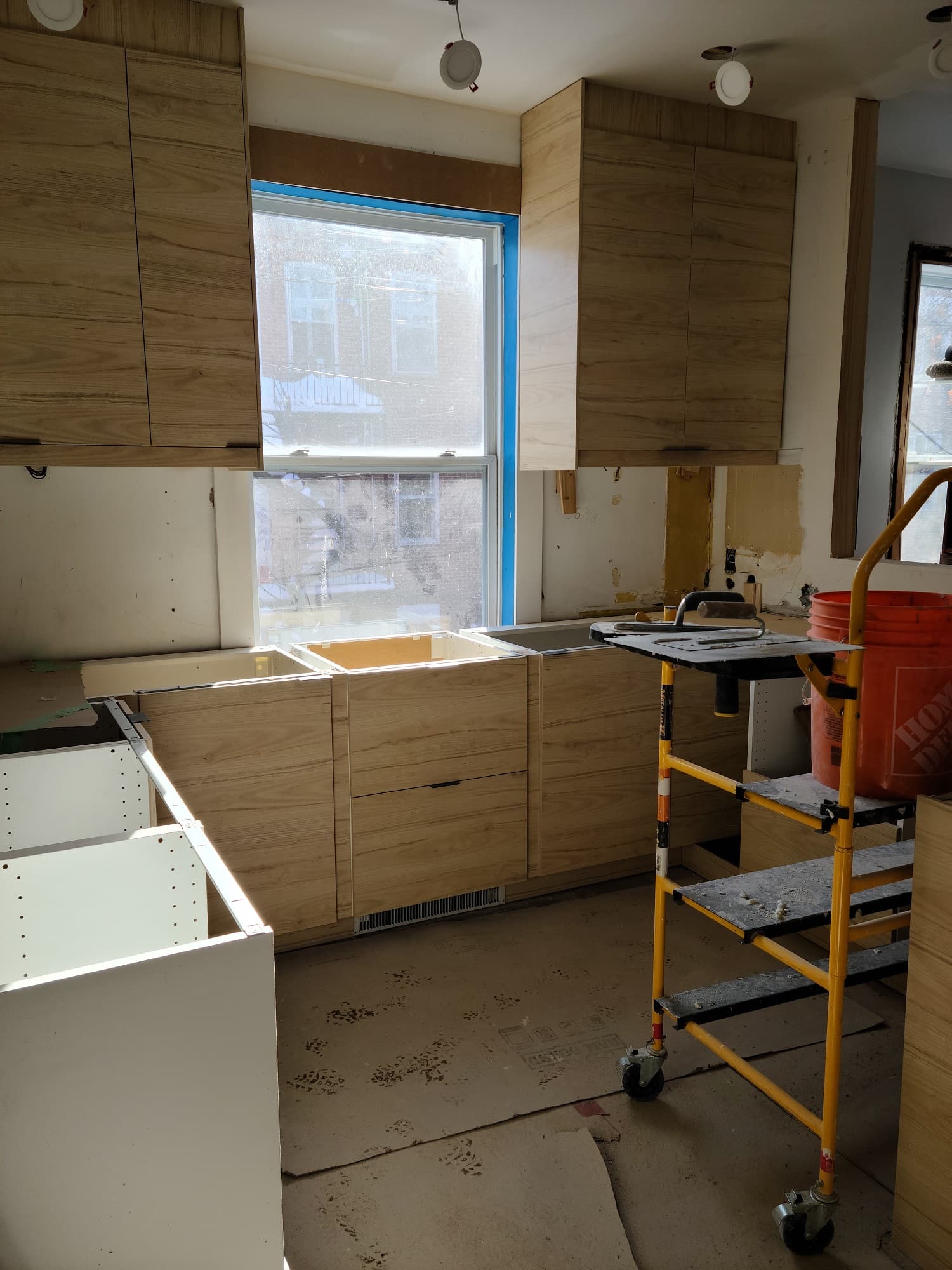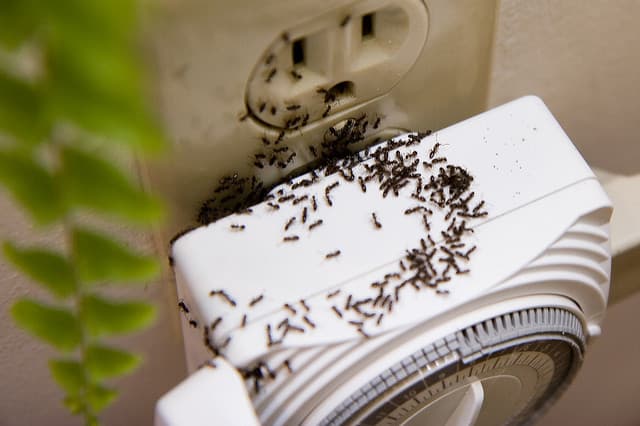
Whether you call them snow guards, snow barriers, snow deflectors, or snow stoppers, these devices prove helpful when it comes to preventing snow-related damages and injuries during the winter months.
As a matter of fact, if you have a pitched roof, you neither want ice or snowfall to injure passers-by nor do you want it to damage surrounding structures, especially if it’s that of your business! So, in addition to clearing your roof on a regular basis, consider installing snow guards to reduce potentially dangerous snow avalanches.
What Are Snow Guards For?

Source: Flickr
Given their name, it’s not surprising that these devices fitted on sloped roofs are used to retain, deflect, or even out the weight of accumulated snow throughout the numerous snowfalls that occur in regions like Quebec. And, they’re usually suited to most roof coverings (metal, shingles, tiles, etc.).
Aside from protecting pedestrians and whatever else is nearby (cars, gutters, shrubs, skylights, plumbing, stairs, etc.), snow guards can spare you the hassle of a lawsuit and a whole lot of remorse. Furthermore, these devices will allow you to save money by extending your roof's durability, thus delaying premature wear and tear, especially in the case of leaks.
Different Types of Snow Guards
Nowadays, due to technological innovations in the construction and design industry, there are endless roof colours and shapes. Fortunately, snow or icefall guards are keeping up with the trends. They’re available in a variety of materials such as stainless steel, polycarbonate, zinc, copper, and aluminum, and you can match their colour to your roof or even to your desired style with patterns or mouldings.
There are two main snow guard styles:
Pipe-style snow guards

Flickr
Made up of vertical joints and rails (or pipes), they give off a fence-like look. Depending on the model chosen, these pipes (or rails) can hold an enormous amount of snow and are perfectly suited for residential buildings/houses as well as large buildings (businesses, institutions, industries, etc.). Although not very subtle apparatus, some people may find them rather charming and rustic-looking.
Individual snow guards

Flickr
Mostly used on residential buildings, these little aesthetically pleasing devices are fitted according to a strategic pattern designed by a specialist.
Unlike the previous model, this one isn’t only found on the edge of the roof to contain heavy loads of snow but rather installed in problematic and hazardous areas to evenly distribute the amount of snow. This ensures the snow will melt more gradually and will not break off in massive, dangerous clumps.
These units are also used to prevent ice from accumulating in corners, such as along the edges of skylights or chimneys.
Installing Snow Guards

Source: Flickr
Above all, consult with a professional before shopping around and installing any snow guard mechanism. The type, quantity, and method of installation must be tailored to your situation (roof pitch, type of roof covering, the load-bearing capacity of the structure, regional weather conditions, etc.).
Also, if your roof has gutters, a heating system, solar panels, and so on, the engineer will have to adapt the installation pattern accordingly. They’ll also have to consider areas where snowfalls might be particularly dangerous, such as above front doors and sidewalks.
Bottom line: These devices cannot be installed haphazardly. By doing so, you risk blowing your money by aggravating snow build-ups or assuming that you’re well protected when that isn’t the case. The safety of others hangs in the balance, especially if we’re talking about the roof of your business, and heavy heavy foot traffic is a commonality. Not to mention if you have young children…
Interestingly, installing snow guards won’t puncture your roof as they’re fastened between two panels or on the sides, and anchored to the structure instead of the sheathing. The ideal number of snow guards is determined according to the surface area to be covered and the areas where elevation changes are more significant. Secured with corrosion-resistant metal screws and made of high-performance alloys, they have a good warranty and are quite durable.
How to Install Pipe-Style Snow Guards (DIY)
Pipe- or rail-type snow guards are simpler and less risky to install yourself, as they simply run along the edges of your roof. They usually come in 3 sizes and have 1 to 3 tubes that fit into shark fin-shaped plates. They’re typically spaced 15 to 20 inches apart and have up to 5 anchor points.
You’ll need:
Measuring tape
Chalk
Sealing tape
Hacksaw
Hex-shank drill bits
First, mark a perpendicular spot at about 1.5 feet from the roof’s edge.
Line sealing tape along where you’ll be screwing in the clamps (or brackets that hold the pipes).
Secure the clamps (or brackets) by screwing in the screws wherever necessary, then insert the pipes while making sure the plastic protectors are in place.
Cut any excess pipe when fixing the last bracket or clamp.
Now we’d say you’re ready to face the next winter season with peace of mind!
Looking for something else?
Related articles
The latest industry news, interviews, technologies, and resources.

Cynthia Pigeon
•07 Nov 2023
While thermal insulation is a top priority for most homeowners, proper roof ventilation is also critical to keeping your roofing system in tip-top shape. A roof vent cap is key to achieving this goal.

Cynthia Pigeon
•07 Nov 2023
One of the most common types of roof in Canada, the gable roof, is all the rage right now, in due part to its modern aesthetic, but also because of the many positive features it adds to a house. So, are you thinking of building a gable roof over your house? If so, you might be looking for more information about gable roofs to know for sure whether you’re making the right choice. Check out the following to learn more about the different types, advantages, coverings, and accessories available for gable roofs.

Cynthia Pigeon
•07 Nov 2023
Marble has been praised for years, and not solely for its sleek beauty and stylish appearance. This type of flooring is, bar none, favoured by most.

Editorial Team
•17 Feb 2025
Kitchen cabinets can be the centrepiece of the space, and beautiful, well-designed ones will make a huge difference in both the layout and feel of the room. Custom kitchen cabinets are an excellent way to add a unique element to your home as well as increasing the resale value.

Editorial Team
•07 Nov 2023
What is more shocking than discovering a problem in our home? This problem may have been present before your purchase, even if it has been a few years since you’ve bought it. You have recourses, it is up to you to proceed!